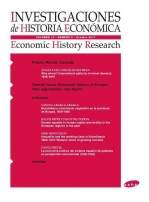By David Pretel

The various nineteenth-century national patent systems had a heterogeneous institutional evolution. This article explores the international determinants of this institutional diversity, using the Spanish system as a case study. Instead of presenting the causality as running from institutions to economic performance, it explores the inverse relationship, that is, how Spain’s technological backwardness and dependency set the stage for the institutional organisation of this country’s patent system. The international dynamics manifested in different aspects of the system: its peripheral, hybrid and dual nature; the Spanish reception of the European controversy over patent rights; the early Spanish integration into the international patent system; and the prominence of international intermediaries. The article concludes that nineteenth-century variations in the institutional architecture and the administrative practices of the various national systems were the consequence of the historical making of an asymmetric international patent system.
Keywords: Patents, International system, Institutional diversity, Intermediaries
Published:
2017